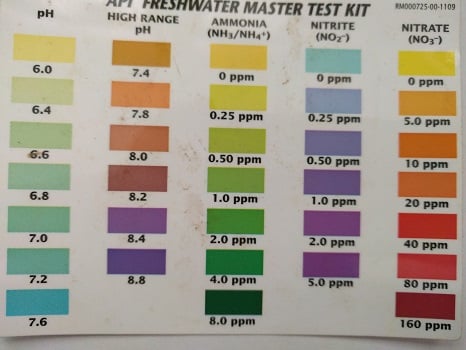Shortly after doing a water change, you may notice that a few of your Red Cherry Shrimps may end up dying. To prevent a loss of life every time you decide to swap out the water in your tank, you can take a look at this guide from Aquarium Blueprints.
1. When it comes to water changes, we recommend doing no more than 20% at a time. This is because a major water change may lead to big swings in temperature, pH, KH and/or GH. These may end up causing a lot of stress to your shrimps, which may lead to health issues.
2. The Neocaridina species, which the Red Cherry Shrimps are part of, prefers a stable environment. Therefore, you may want to reduce the frequency of water changes.
If you have a shrimp-only tank, then these inverts do not product much organic wastes on their own. Thus, you can go for weeks, or even months, at a time before having to swap out water.
In our 20-gallon Red Cherry Shrimp tank, which also houses some Ramshorn Snails, we only do a small water change every couple of months. If the water level gets too low in between the changes, then we simply top it off more fresh water.
With that said, your aquarium may be different. The only way to tell for sure if your tank needs a water change is by testing its parameters. If the tank water has 0 ppm of ammonia, 0 ppm of nitrites and less than 20 ppm of nitrates, then you don’t need to do swap out the tank water.

3. A water change will most likely cause your Red Cherries to molt. If you haven’t been feeding them the correct diet of protein and vital minerals, then they may not be able to break out of their old shell and pass away.

4. During a water change, you may also be refilling the tank too quickly, potentially causing shock to your shrimps.
To prevent this from happening, we recommend that you slowly drip feed the new water into the tank, giving your pet inverts plenty of time to slowly adjust to the changing water parameters.
If you don’t have the equipment to set up a drip feed, then you can directly add a small amount of the new water every 5 minutes for acclimation.
5. If you are using tap water to refill your tank during a water change, then make sure you are using a dechlorinator like Seachem Prime. Otherwise, the chlorine and/or chloramine from the tap may end up harming the shrimps as well as the beneficial bacteria in your tank.

The bacteria colonies are there to keep the ammonia, nitrites and nitrates in check. If there is a major loss of these creatures, then the resulting spikes in ammonia, nitrite and nitrate levels may end up killing your Red Cherry Shrimps.
